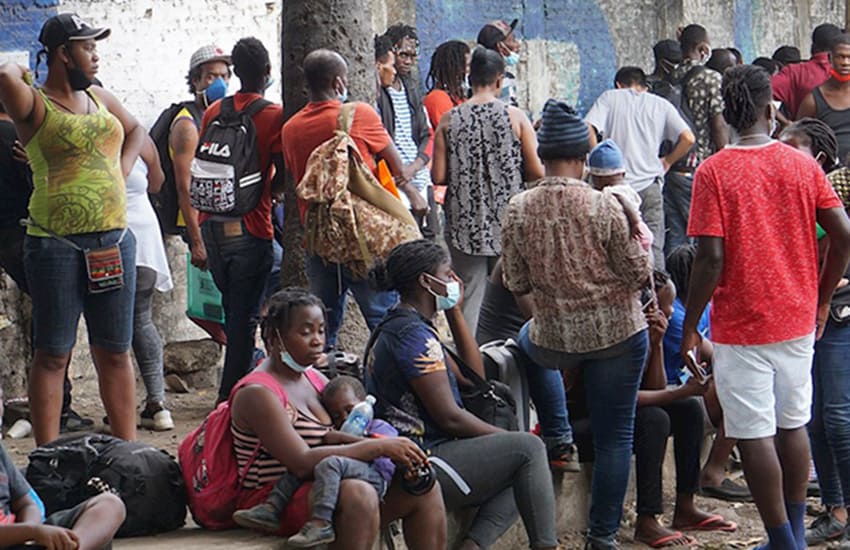Mexico is on track to record its highest ever number of asylum requests as growing numbers of migrants choose to stay in the country rather than seek entry into the United States.
The Mexican Commission for Refugee Assistance (Comar) registered 41,195 applications for asylum in the first five months of the year, 16 more than in all of 2020, when migration fell due to the coronavirus pandemic.
The figure is 68% higher than that recorded in 2019, when Comar received 24,551 requests between January and May. New records for asylum applications were set in March, April and May this year with more than 9,000 requests in each month.
Mexico is becoming a destination rather than a transit country for a growing number of migrants, said Marcos Tamariz, deputy head of mission for Doctors Without Borders in Mexico and Central America.
“We’re seeing statistics that are going to exceed the historic record of 80,000 refugees [in one year],” he said, adding that many of those who are seeking asylum are living in precarious conditions in migrant shelters, detention centers and makeshift camps.

In a new report entitled Global Trends: Forced Displacement in 2020, the United Nations Refugee Agency said that out of 549,200 internationally displaced Salvadorans, Guatemalans and Hondurans, 78,600, or 14%, sought asylum in Mexico.
“While the intended destination of people on the move from these three countries generally remains the United States, some are increasingly settling in Mexico, and a much smaller number go south to Costa Rica and Panama. These countries are also becoming major transit countries for nationals from within the subregion and from outside the region,” the UNHCR said.
Comar says it has received asylum requests from citizens of 78 countries but that just six — El Salvador, Guatemala, Honduras, Venezuela, Cuba and Haiti — typically account for 90% of applications. It has processed just over 13,000 applications this year and ruled in favor of granting asylum in almost three-quarters of the cases.
While it is busy assessing asylum applications, the National Immigration Institute (INM) is equally busy detaining and deporting migrants. The INM reported on June 6 that it had detained 90,850 undocumented migrants this year and deported 42,067 — 46% of the total — to their country of origin.
Some 12,000 INM officials and members of security forces, including the military and National Guard, are deployed to control the flow of migrants, record numbers of whom have arrived in Mexico in recent months on their way to the United States.
Mexico and the United States signed an agreement earlier this month to work together to address the lack of economic opportunities in El Salvador, Guatemala and Honduras, where poverty, violence, climate change and two devastating hurricanes late last year have triggered an exodus of people.

The federal government deployed large numbers of security force members to stop migrants in 2019 in order to appease former United States president Donald Trump, who threatened to impose blanket tariffs on Mexican goods if Mexico didn’t do more to stem illegal migration.
The United States has scrapped many of Trump’s harshest immigration policies, but Vice President Kamala Harris nevertheless told would-be migrants not to travel to the U.S. during a trip to Guatemala earlier this month. She later softened her message, saying that she was “committed to making sure we provide a safe haven for those seeking asylum, period.”
President López Obrador told Harris in May that his administration agreed with the migration policies the U.S. government was developing and would aid in their implementation. “You can count on us,” he said.
Both Mexico and the U.S. say they are committed to addressing the root causes of migration in Central America, which history shows have been notoriously difficult to combat.
With reports from EFE
